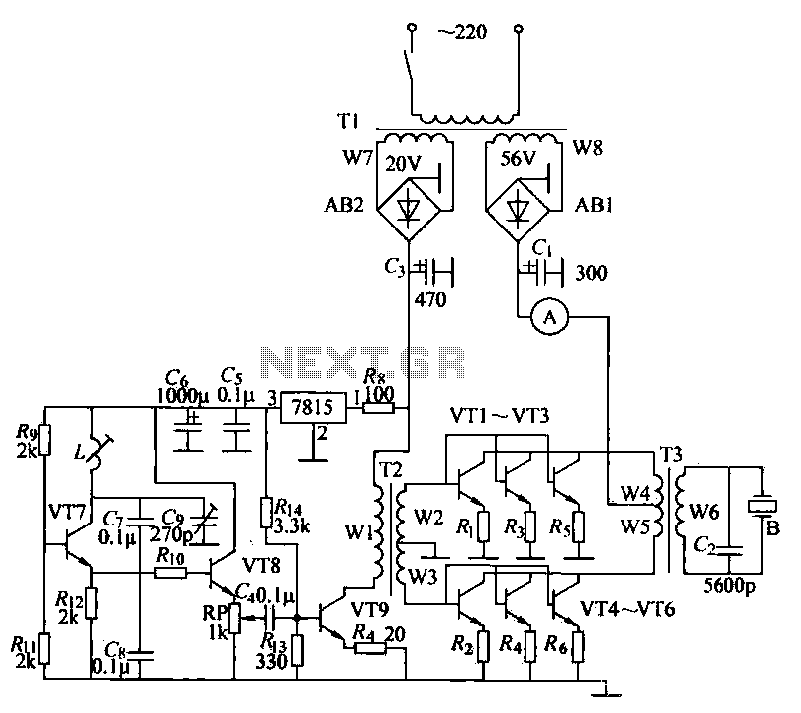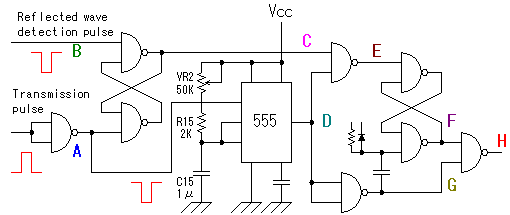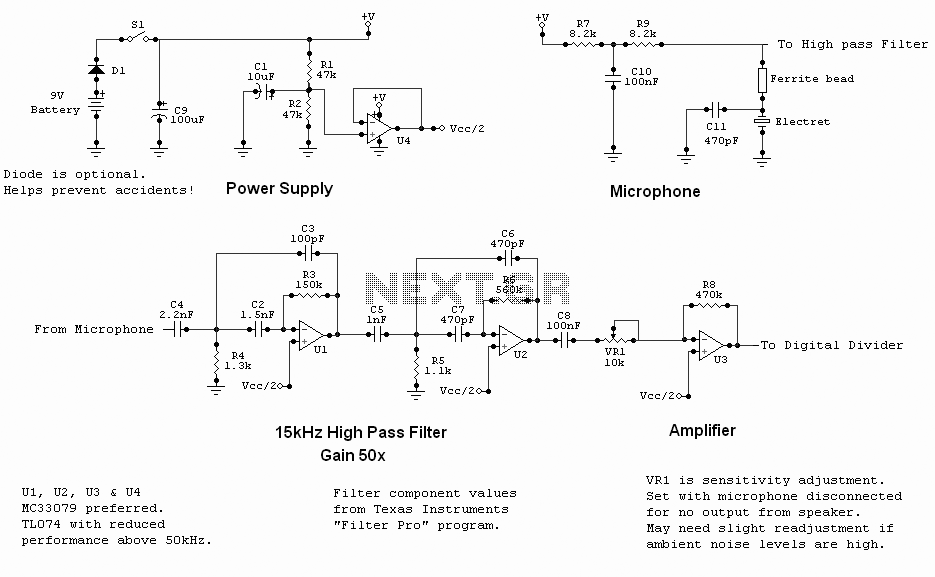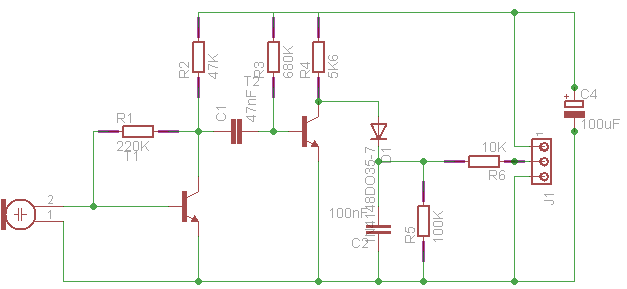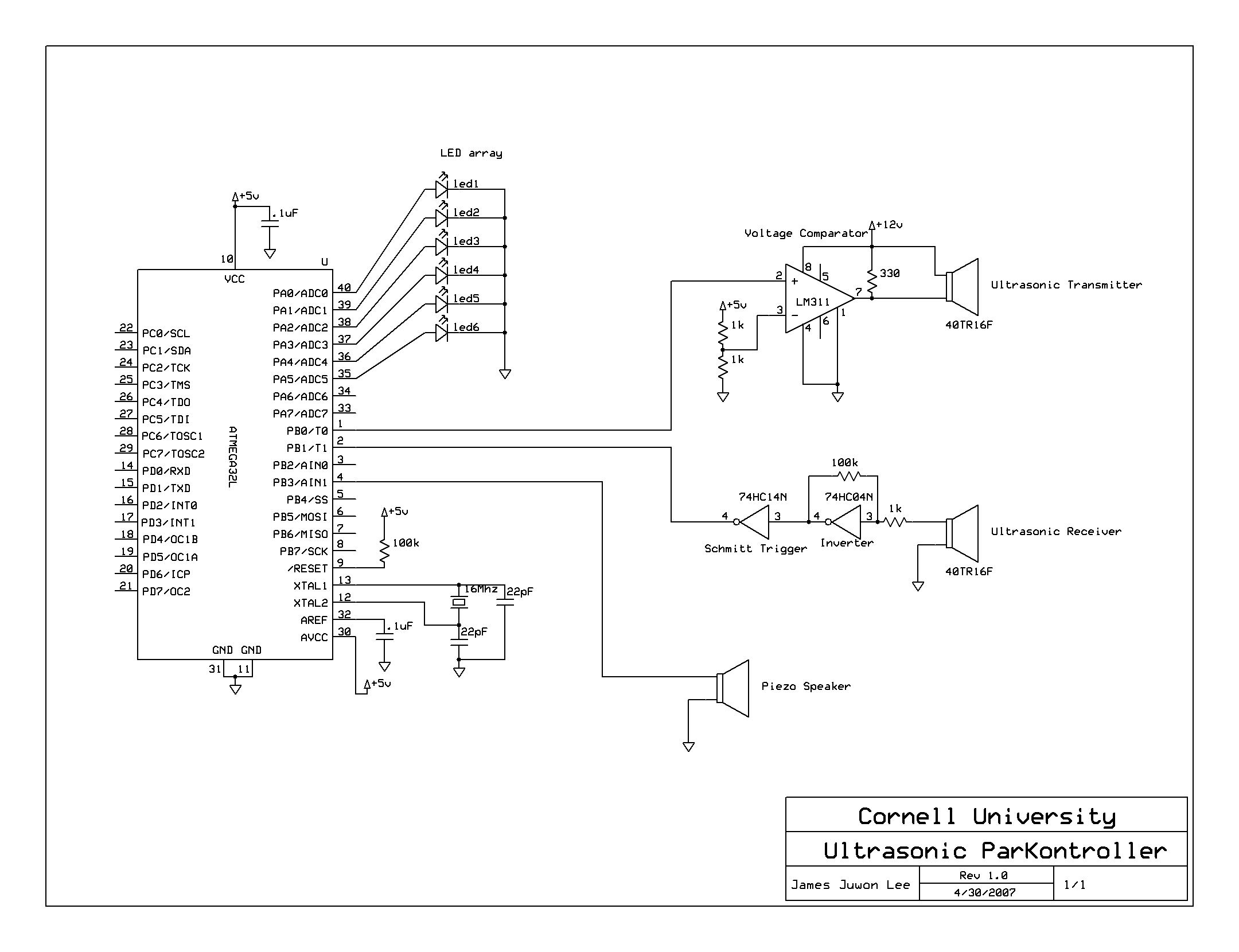
Ultrasonic atomizer 2
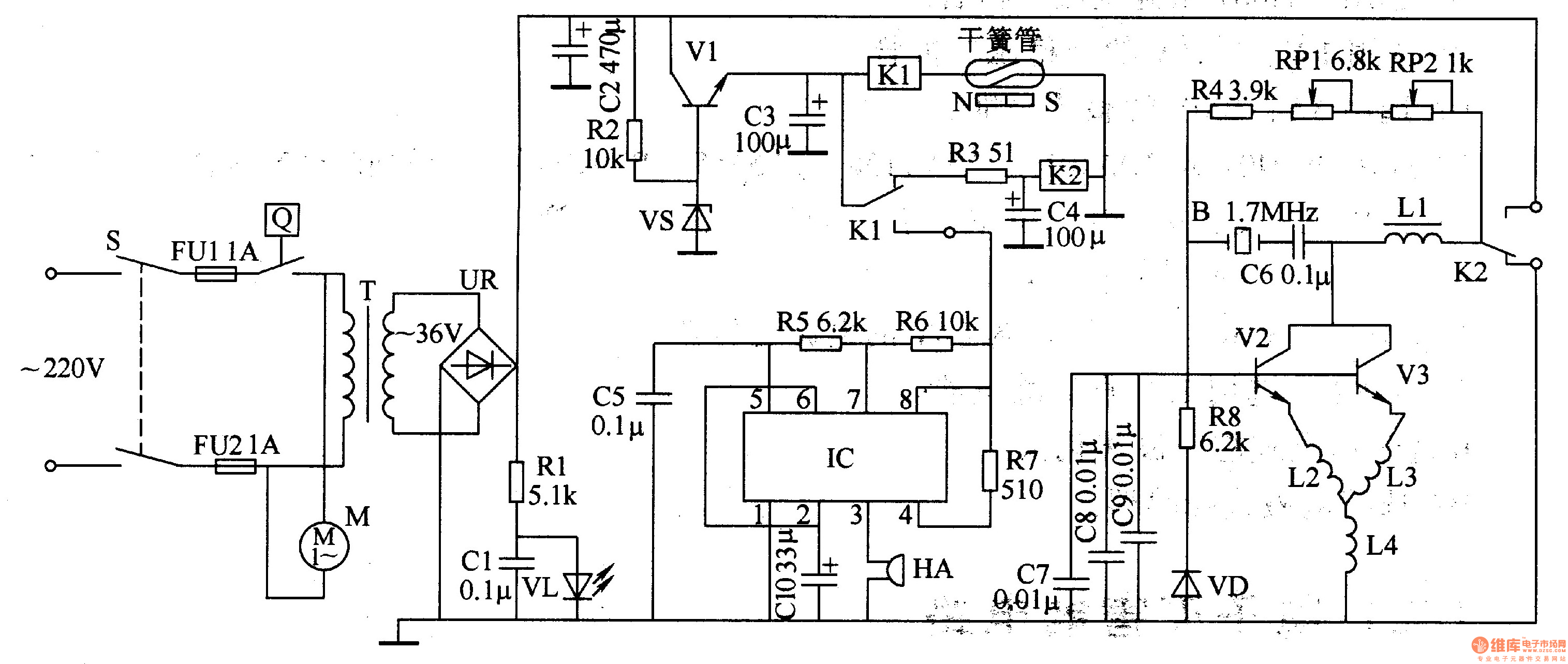
The ultrasonic atomizer circuit consists of a power supply circuit, control circuit, water detection alarm circuit, and an ultrasonic oscillator, as illustrated in Figure 3-190. The power supply circuit includes a power switch (S), fuses (FU1, FU2), a timer (Q), a power transformer (T), a bridge rectifier (UR), resistors (R1, R2), and transistors (V1), along with a voltage regulator.
The ultrasonic atomizer circuit is designed to convert liquid into a fine mist using ultrasonic waves. The power supply circuit is critical for delivering the necessary voltage and current to the various components. The circuit begins with a power switch (S), which controls the entire system's operation. When activated, the current flows through the fuses (FU1, FU2) that protect the circuit from overloads or short circuits.
The timer (Q) is used to manage the operation time of the atomizer, ensuring that it operates only for a specified duration to prevent overheating or overuse. The power transformer (T) steps down the mains voltage to a lower level suitable for the circuit's components. Following this, the bridge rectifier (UR) converts the alternating current (AC) output from the transformer into direct current (DC), which is essential for the operation of the electronic components.
Resistors (R1, R2) are employed to limit the current and set the appropriate voltage levels for the transistors (V1), which act as switches, controlling the flow of current to the ultrasonic oscillator. The oscillator generates high-frequency signals that drive the ultrasonic transducer, creating ultrasonic waves that agitate the liquid, resulting in atomization.
Additionally, the water detection alarm circuit plays a crucial role in ensuring that the atomizer operates only when there is sufficient liquid present. This circuit typically uses a sensor that detects the water level and sends a signal to the control circuit to activate or deactivate the atomizer as needed.
Overall, the ultrasonic atomizer circuit is a well-integrated system that combines power management, control logic, and safety features to efficiently convert liquid into mist for various applications, including humidification and aroma diffusion.The ultrasonic atomizer circuit is composed of the power supply circuit, control circuit, water detection alarm circuit and ultrasonic oscillator, and the cirucuit is shown in Figure 3-190. Power supply circuit is composed of the power switch S, fuses FUl, FU2, timer Q, power transformer T, bridge rectifier UR, resistors Rl, R2, transistors Vl, voltage regul..
🔗 External reference
The ultrasonic atomizer circuit is designed to convert liquid into a fine mist using ultrasonic waves. The power supply circuit is critical for delivering the necessary voltage and current to the various components. The circuit begins with a power switch (S), which controls the entire system's operation. When activated, the current flows through the fuses (FU1, FU2) that protect the circuit from overloads or short circuits.
The timer (Q) is used to manage the operation time of the atomizer, ensuring that it operates only for a specified duration to prevent overheating or overuse. The power transformer (T) steps down the mains voltage to a lower level suitable for the circuit's components. Following this, the bridge rectifier (UR) converts the alternating current (AC) output from the transformer into direct current (DC), which is essential for the operation of the electronic components.
Resistors (R1, R2) are employed to limit the current and set the appropriate voltage levels for the transistors (V1), which act as switches, controlling the flow of current to the ultrasonic oscillator. The oscillator generates high-frequency signals that drive the ultrasonic transducer, creating ultrasonic waves that agitate the liquid, resulting in atomization.
Additionally, the water detection alarm circuit plays a crucial role in ensuring that the atomizer operates only when there is sufficient liquid present. This circuit typically uses a sensor that detects the water level and sends a signal to the control circuit to activate or deactivate the atomizer as needed.
Overall, the ultrasonic atomizer circuit is a well-integrated system that combines power management, control logic, and safety features to efficiently convert liquid into mist for various applications, including humidification and aroma diffusion.The ultrasonic atomizer circuit is composed of the power supply circuit, control circuit, water detection alarm circuit and ultrasonic oscillator, and the cirucuit is shown in Figure 3-190. Power supply circuit is composed of the power switch S, fuses FUl, FU2, timer Q, power transformer T, bridge rectifier UR, resistors Rl, R2, transistors Vl, voltage regul..
🔗 External reference
